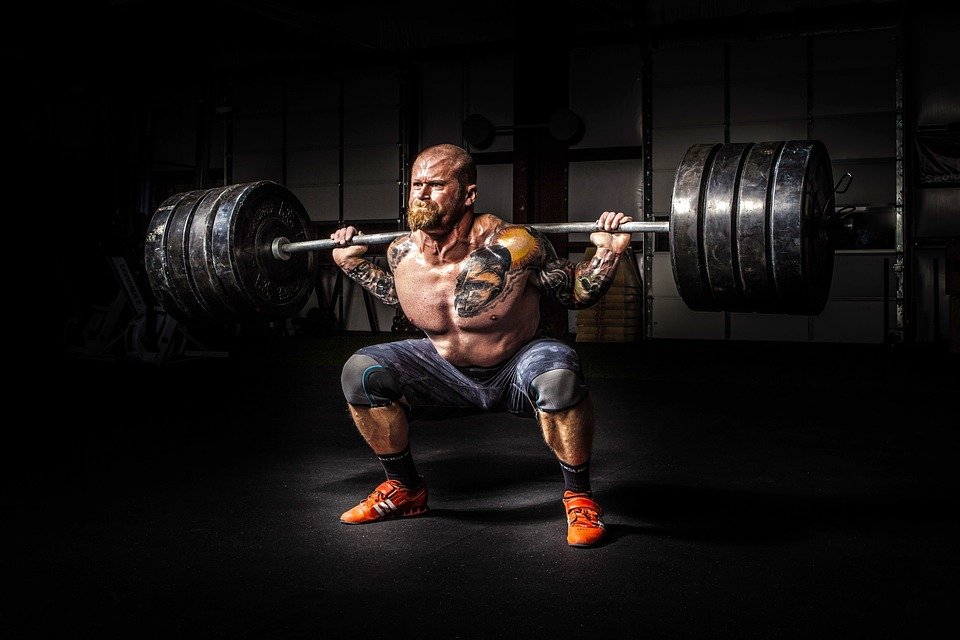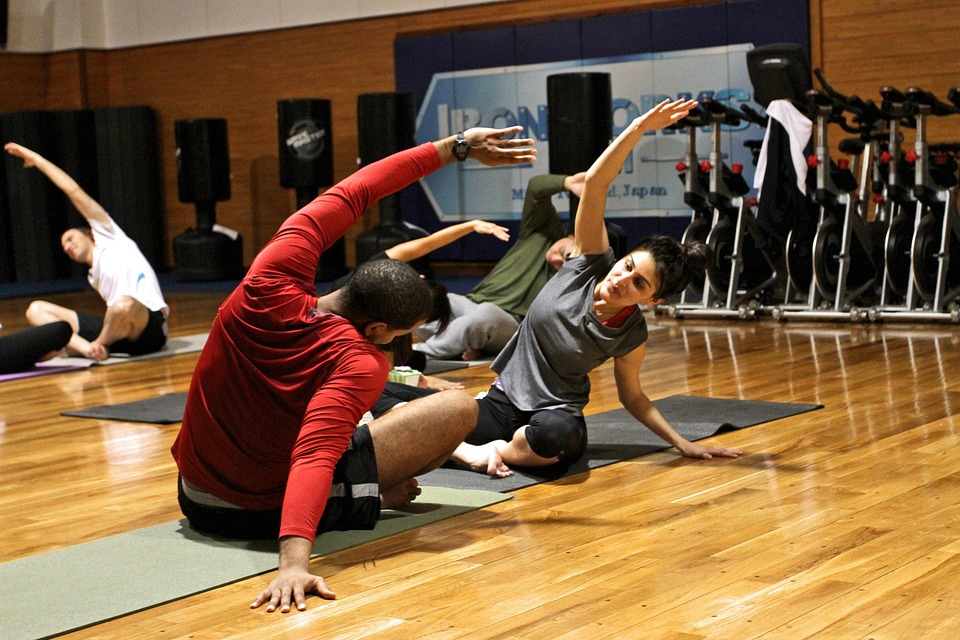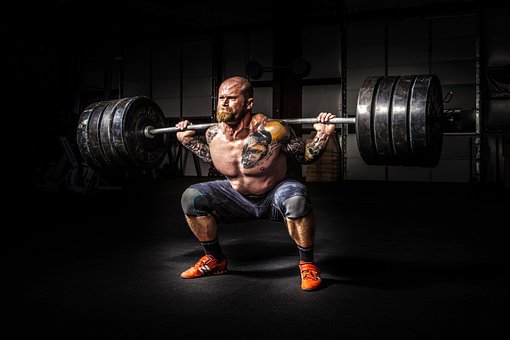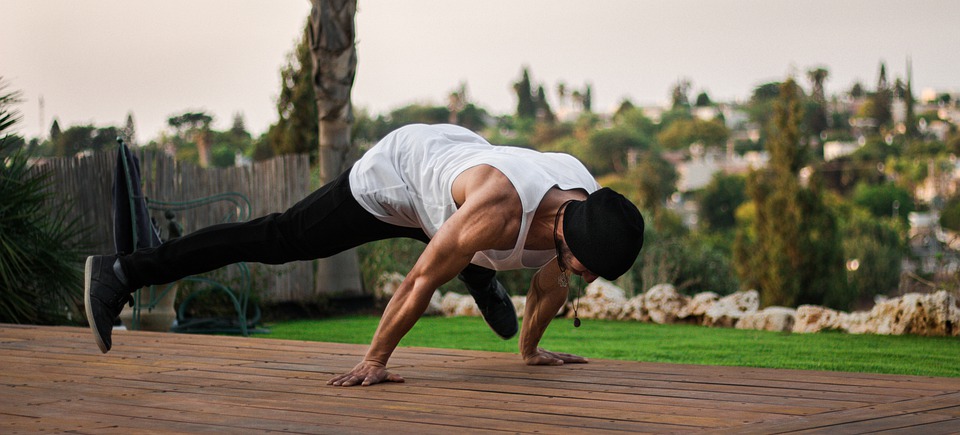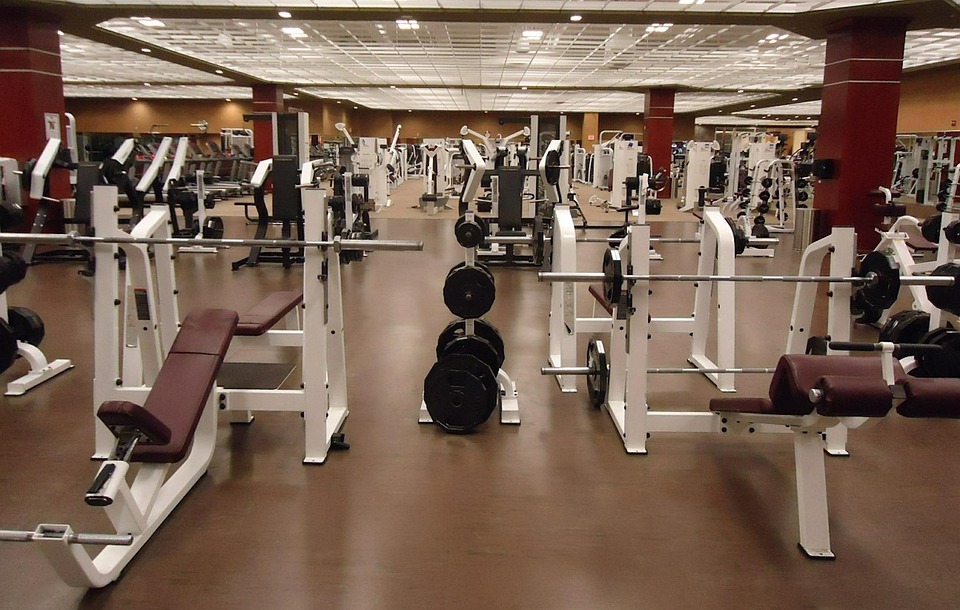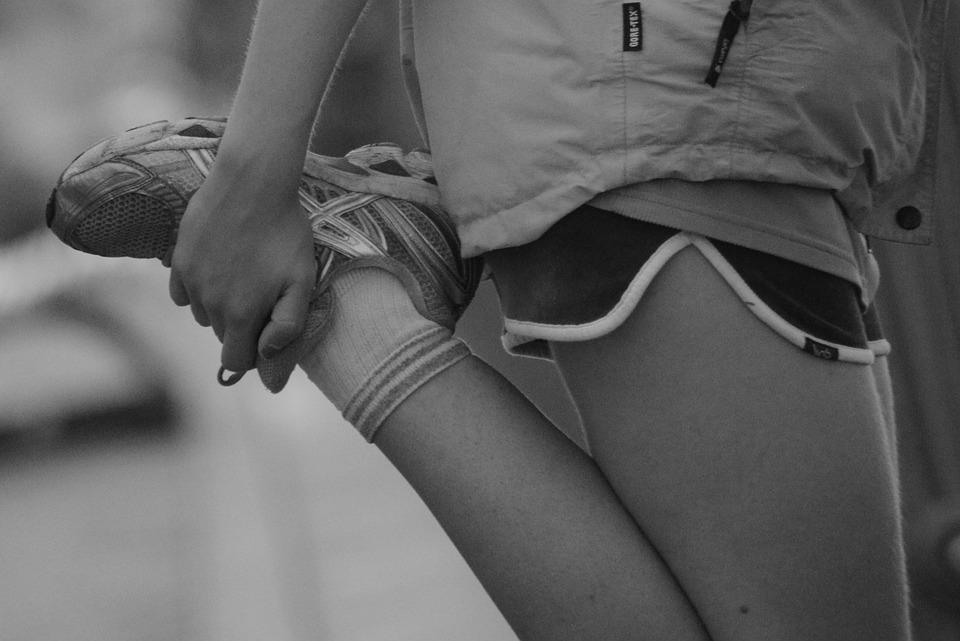
Do You Need To Warm Up Before Lifting?
It is essential to prepare your body for weightlifting by performing some physical warm-up exercises to minimize your chances of being injured.
A pre-workout warm-up serves to:
- Increase your basal body temperature,
- Promote increased circulation and blood flow to your joints and muscles,
- Increase mobility,
- Activate dormant muscles, and
- Prime your nervous system to recruit more muscle motor units
What Happens If You Don’t Warm Up Before Lifting Weights?
If you don’t stretch or do a light workout before lifting weights, you can put yourself at risk of having an injury to your muscles or bones.
It is not possible for your body to quickly generate the necessary muscle fibers for high-intensity movements. Warming up your body correctly will help stretch out your muscles, stimulate the production of synovial fluid for your joints, and make your muscles better able to contract.
The 3 Most Important Components Of A Warm-Up Routine
It is important to carry out three distinct warm-up movements before lifting weights.
Here is my recommended routine:
- 1-2 General Activation drills,
- 2 Dynamic Warm-Up Exercises and
- 2 Specific Activation drills
Let’s go over each one individually.
1. General Activation Drills
The purpose of general activation drills is to activate two important muscle groups that are usually not in use in many people.
Like most individuals, you are likely in need of activating your gluteal muscles as well as your abdominal muscles.
We reside in an environment that advocates a lifestyle of being seated throughout the day. The consequence of this is that the two muscle groups remain inactive for several hours a day.
What are the advantages of activating the glutes and abs?
It is essential to engage the glutes and abdominal muscles before beginning any exercise routine.
Why?
Every functional exercise requires the use of the glutes and abdominals.
Trying to perform compound exercises without properly engaging your abdominal muscles can lead to incorrect positions, and this will increase your chances of hurting yourself.
Examples Of Warm-Up Exercises For General Activation
Here are a few examples of drills that activate the glutes and abdominals simultaneously:
- Birddogs
- Planks
- Side Planks
- Glute Bridges
Tighten your butt muscles and stiffen your abdomen as hard as you can for a duration of five seconds while you are performing these drills. Your glutes and abs should be feeling a burning sensation after exercising with one or multiple of these drills.
If you don’t apply maximum effort, you’re just wasting your time.
Relax and repeat the drill for ~ five repetitions.
Often, one to two activation drills are enough.
2. Dynamic Warm-Up Exercises
The following part of our preparation is a dynamic warm-up activity.
Dynamic exercises involve stretching and extending any tense or tight muscle fibers.
Often, people assume that static stretching is the only kind of stretching there is. Static stretching involves staying in one particular posture for a set period of time.
Dynamic exercises are different.
During a dynamic warm-up, you move through an exercise that takes you through the entire range of motion.
Examples Of Dynamic Warm-Up Exercises
Perform these movements to get your muscles working with added resistance: Lunges (for glutes, quads, and hamstrings), Push-ups (for chest, triceps, and core strength), Squats (for quads and glutes), Plank (for core and back strength). Do these activities to work your muscles and progress with extra resistance: Lunges to target your glutes, quads, and hamstrings; Push-ups to increase the strength in your chest, triceps, and core; Squats to build your quads and glutes; and Plank to enhance your core and back muscles.
- Chest Opener (Bench press, Overhead press)
- Banded Shoulder Dislocations (Bench Press, Overhead press)
- Bent Over Double Lat Stretch (Overhead press, Bench Press)
- Deep Squats to Stands (Squats, Deadlifts)
- Lunges with Kneeling Hip Flexor Stretch (Squats, Deadlifts)
Take half a minute to a minute and a half in each position, then switch to another spot in the farthest extent of the extension.
Dynamic stretching exercises should be personalized to fit your fitness level and the activities you will be doing during the day.
It is very important to figure out the stretches that are connected to the areas of your body needing attention for the best result.
3. Specific Activation Drills
The last element of the warm-up is focused activation exercises.
Activation exercises are designed to turn on the main muscle groups for the activity you are about to do. Do some practice with a weight that is not too heavy, or use your own body weight, for 1 or 2 sets of 10 or more reps.
Examples Of Specific Warm-Up Exercises
Here are some examples of specific activation drills, including the exercise they may help:
- Bodyweight Squats (Squats, Deadlifts)
- Duck walks with a band around your knees (Squats, Deadlifts)
- Dumbbell lateral raises (Bench press, Overhead press)
- Dumbbell Overhead presses (Bench press, Overhead press)
- Push-ups (Bench press, Overhead press)
It is evident that each exercise concentrates on targeting specific muscles prior to a weight-lifting session.
The Best Dynamic Warm-Up Exercises You Need Before Your Next Workout
Band X Crossover Lateral Walk
Doing banded lateral moves is a wonderful way to get your glutes working which is important for taking care of your knees and making it easier to move in various dimensions. This lateral walk variation will increase the level of difficulty a bit.
This variation of the lateral walk is made more difficult by crossing the band over, adding additional tension. The X crossover lateral walk can be helpful in building both your core muscles and your ability to move in the forward direction.
Benefits of the Band X Crossover Lateral Walk
- You’ll train the gluteus minimus and gluteus medius, both of which are important for hip and knee health.
- This move works the glutes in the frontal plane, which strengthens the kinds of lateral movements you might need in sports.
- It’s the perfect dynamic warm-up exercise for any frontal plane movements like side lunges or Cossack squats.
How to Do the Band X Crossover Lateral Walk
Assume a posture that is tall and wide; space your feet until they are level with your hips. Pass the ends of the resistance band under your feet and hold them. Construct a shape that resembles an X by intersecting the band in front of your torso. Grasp the two sections of the band with your arms in a comfortable position in front of you. Take small steps to one side. Keep your toes pointed forward the entire time. Repeat on the other side.
Kettlebell Arm Bar
This exercise integrates both stability and mobility, making it unique and a great dynamic warm-up activity. It increases the strength of the entire shoulder muscle, especially the rotator cuff, and also can unlock the upper and lower back, especially after sitting still for an extended period of time. It is essential to have a flexible t-spine area to keep your back in a neutral position, particularly when doing the deadlift or squat.
Benefits of the Kettlebell Arm Bar
- Improves shoulder stability and mobility.
- Improves your ability to get your arm over your head without compensating spinal posture.
- A great dynamic warm-up exercise for squatting, deadlifting, and any overhead exercise.
How to Do the Kettlebell Arm Bar
Position your body laying on your right side, knees bent at around a 90-degree angle, and secure the kettlebell with both hands. Lift the kettlebell with both hands then let go of your left hand making sure it is at a 30-60 degree angle from your body. Bring your right leg across to the left side of your body, maintaining the steady position of your right arm all the way through the movement.
Begin by putting your right knee on the ground, bent at a 90-degree angle. Hold your left arm straight up above and rest your head in a comfortable position on it. Take a deep breath in through your nostrils, then exhale from your mouth while you press your hips downwards and stretch your right arm and fingers outwards. Do the exercise the desired number of times and then repeat the action on the other side.
Walking Spiderman With Hip Lift and Overhead Reach
This would be the exercise to pick if you could only pick one. This single exercise includes multiple smaller exercises, thereby allowing you to become warmer and activating your total body. This technique works to develop the muscles that bring your leg inwards, as well as the ability to make movements in your hip joint, loosen up your hamstrings, make your hip flexors stronger, and increase the mobility in the part of your spine directly between your ribs.
Benefits of the Walking Spiderman With Hip Lift and Overhead Reach
- When you’re short on time, this exercise will warm up your whole body in a hurry.
- Trains ankle, hip, shoulder, and thoracic mobility.
- Full body dynamic warm-up exercise can be done on lower, upper, or full days.
How to Do the Walking Spiderman With Hip Lift and Overhead Reach
Move your body into a forward lunge and bring both arms down toward the ground inside your leading leg. Next, spread your legs and put your hands on the floor. Straighten them while they are there and then lower back down, eventually coming into a low lunge. Extend the arm that is farthest from the front leg and turn it so that your gaze follows your hands. Take your foot and come back to the starting point, step up, walk over to the other side, and then do it all again.
Passive Leg Lowering
The passive leg lowering exercise involves bending the hip of one leg while stretching the hamstring of that same leg. Your other leg bends and straightens while your core stays strong. Doing different exercises to work on the mobility of your hips and legs independently can be a beneficial way to increase flexibility. Hip separation is developed through the passive leg lowering exercise, with one hip flexing and the other extending. The fundamental action of locomotion on a daily basis, as well as many single-leg exercises, is based on this.
Benefits of the Passive Leg Lowering
- A great dynamic warm-up exercise as it trains hip mobility, and core stability while providing an active stretch for your hamstrings.
- You’ll train hip separation here, which is important for running and single-leg exercises.
- It’s a great recovery exercise to perform after squatting or deadlifting.
How to Do the Passive Leg Lowering
Lie on your back and attach a resistance band around the center of one of your feet. Bend both legs at a 90-degree angle, and hold a resistance band in each hand. Grab the band and stretch it to the point where you can feel your abdominal muscles engage and a stretching sensation in your hamstring muscles. Lower your free leg to the ground slowly. Keep your banded leg stable. Bring your heel down almost to the floor while maintaining a straight lower back. Return your banded leg to starting position. Repeat for reps and then switch sides.
Back-to-Wall Shoulder Flexion
This exercise strengthens the shoulder blades so they can move independently of the lower back in order to work around the ribcage. This exercise strengthens the posterior pelvic tilt, keeping your neck in a neutral position, and helping to maintain core stability as you lift your arms above your head. This exercise is perfect for initiating a warm-up routine before lifting over the head.
Benefits of the Back-to-Wall Shoulder Flexion
- A great dynamic warmup exercise for most overhead movements.
- Improves your ability to train overhead without compensation.
- When performed regularly and with good form, this improves your overhead shoulder mobility.
How to Do the Back-to-Wall Shoulder Flexion
Position yourself with your back against a wall, with your feet approximately six to eight inches away from it. Be sure that the full length of your back is flush with the wall, have your thumbs facing ahead of you, and have your arms positioned along your sides. Breathe out and take your arms up over your head in an effort to reach your thumbs up to the wall without using your lower back to help. Go back to where you began and do the same thing as many times as you wish.
Band Overhead Reach
It is favorable to stop adjusting your ribs in a wayward-angled direction or putting too much strain on your lower back when you are lifting an object or not above your head. This will help you stay safe from harm and your lower back will be in a contented state. The mini-band overhead reach works on shoulder horizontal abduction, scapular protraction, and retraction, as well as upward and downward rotation which are all necessary for carrying objects above the head securely.
Benefits of the Band Overhead Reach
- This great dynamic warm-up exercise prepares you to lift safely overhead.
- The mini band overhead reach is an excellent low-impact warm-up or recovery exercise for overhead athletes.
- A great indicator exercise on whether you go overhead safely or not.
How to Do the Band Overhead Reach
Secure a mini resistance band around both wrists, leaving your arms staying at your sides. Keep your hands shoulder-width apart. Secure your chest area, use your buttocks muscles, and push ahead as though you are performing a flat bench press. Slowly raise your arms above your head. Don’t expand your chest or push your lower back beyond its natural range of motion. Reverse the movement. Reset and repeat.
Rocking Ankle Mobilization
Dynamic warm-up drills, such as the rocking ankle mobilization, are perfect for preparing your ankles for performing barbell lifts. If you do not take the time to focus on your ankle’s flexibility, it can become difficult for your foot to move up, which is known as dorsiflexion, due to spending a lot of time in shoes. Reduced ankle mobility can impact your squat depth.
Benefits of the Rocking Ankle Mobilization
- This move improves your ankle mobility, which is important for most lower-body lifts.
- You’ll target ankle dorsiflexion, which is needed for better squat and deadlift technique.
- Better ankle mobility goes a long way toward keeping your knees healthy.
How to Do the Rocking Ankle Mobilization
Get into a push-up position. Hike up your hips. Walk your feet a little bit toward your hands. Position your left foot behind your right ankle. Rise up on your toes. Lean forward with your hands on the ground. Start to move your body backward until the sole of your right foot is facing the floor. Keep your right leg straight. Return to the starting position. Repeat for reps.
Tall Kneeling Shoulder Controlled Articular Rotation
The CAR involves using your shoulder joint to its fullest range of motion by kneeling and using it in a controlled manner. Before performing weight lifting exercises, it is necessary to grease the shoulder joints. This helps develop healthier tissue restructuring and prepares the shoulder stabilizers to extend to their fullest range of motion. The result of this is increased shoulder health and a strengthened ability to press weights.
Benefits of the Tall Kneeling Shoulder Controlled Articular Rotation
- This move will lubricate your shoulder joint before hitting the weights.
- You’ll improve your shoulder strength and mobility at the outer edges of your range of motion.
- The reduced base of support of the tall kneeling position helps you perform these moves with better form.
How to Do the Tall Kneeling Shoulder Controlled Articular Rotation
Get into a tall kneeling position. Engage your glutes and flatten your ribcage. Hang your arm at your side and move it in a circular motion towards your back in a slow, controlled manner. Concentrate on feeling every part of the movement. Perform a shoulder circle forwards. Reset and repeat on the other side.

